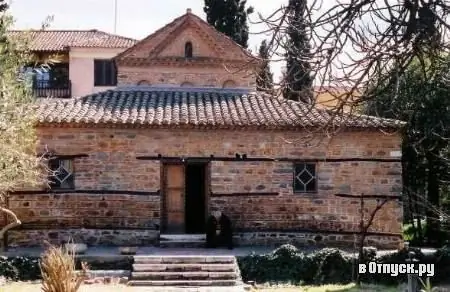
Description of the attraction
The Church of St. Nicholas Orphanos is a Byzantine church in the northeastern part of the historical center of Thessaloniki, between the streets of Herodotus and St. Paul. It is one of the most interesting sights of the city and an important architectural monument of the Byzantine era. Among other early Christian and Byzantine monuments in Thessaloniki, the Church of St. Nicholas is on the list of UNESCO World Heritage Sites.
It is believed that the church was built in 1310-1320, although the exact date is not known for certain, as well as the origin of the name of the temple, which was first mentioned in written sources dating back to the 17th century. According to one version, the church got its name in honor of the defender of widows and orphans, Nicholas the Wonderworker, since the word "Orphanos" means "orphan". Some researchers believe it is more likely that the word "Orphanos" appeared in the name of the church because of the surname of its church patron.
The Church of St. Nicholas Orfanos is a rather small, but very interesting structure, consisting of an oblong room and a U-shaped gallery surrounding it on three sides, forming two side-chapels on the eastern side. There is a deacon in one of the chapels.
Unlike most Christian churches during the period of Turkish rule in Thessaloniki, the Church of St. Nicholas did not turn into a mosque, due to which a significant part of the frescoes decorating its walls (most of them date from the first half of the 14th century) are perfectly preserved and are an excellent example of the Thessalonian school of the Paleologic era. Of particular interest is the ancient marble iconostasis (14th century) - one of the few Byzantine iconostases that have survived to this day, practically intact. It is also worth paying attention to the carved capitals borrowed from a more ancient structure (presumably from the time of Emperor Theodosius I).






